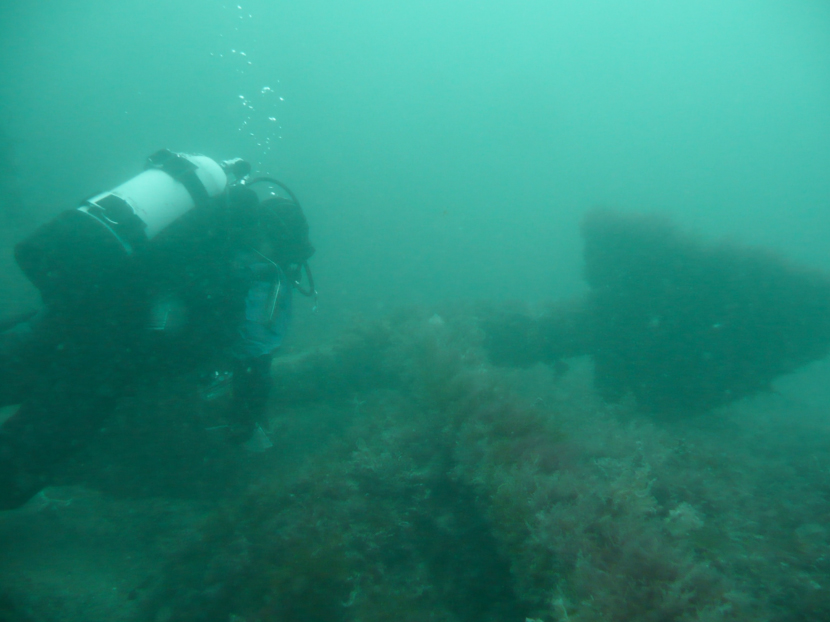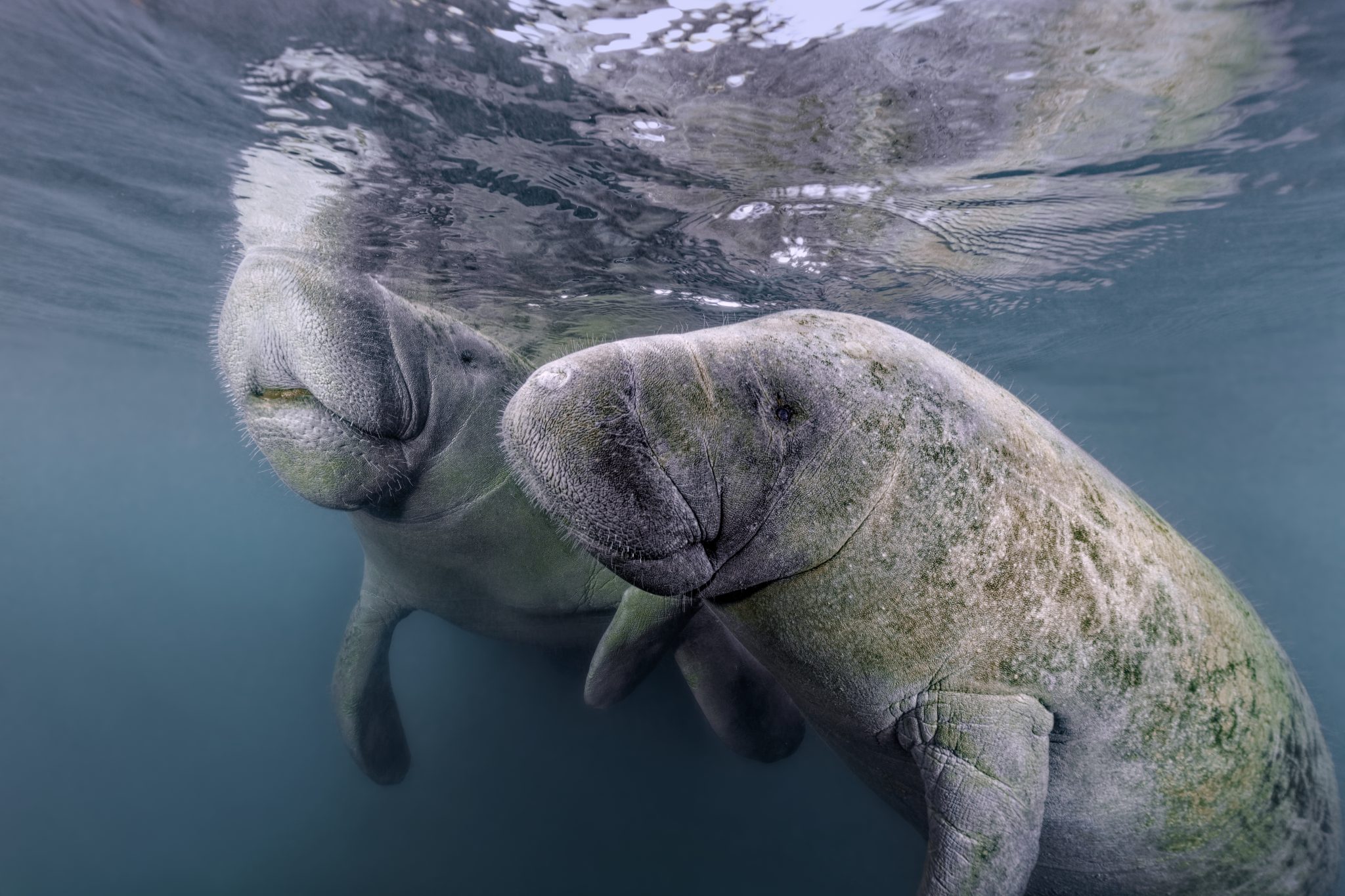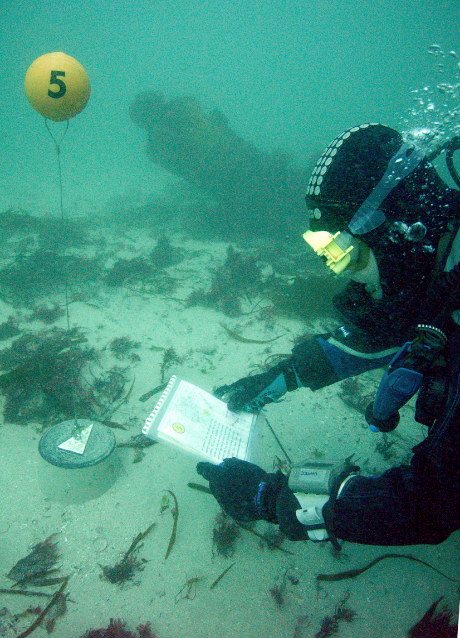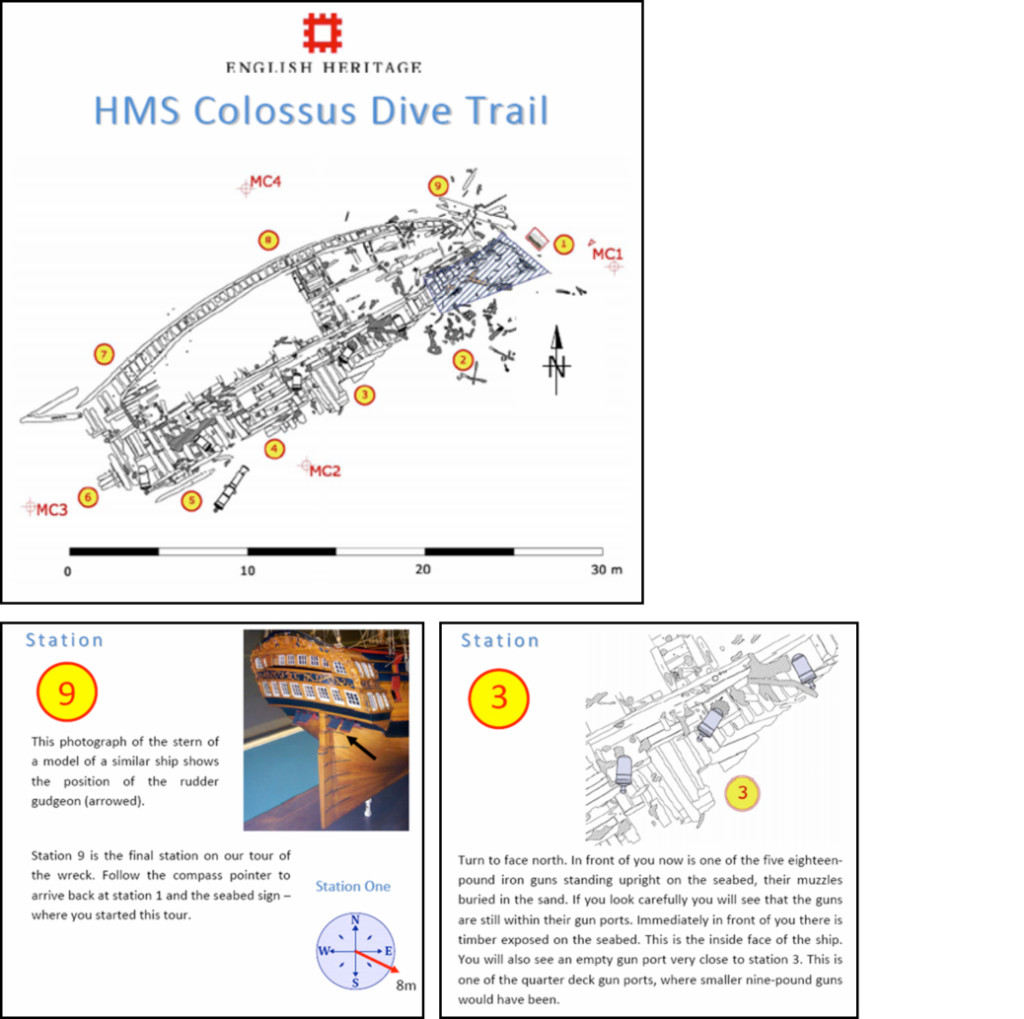News
Dive a Protected Wreck Site with English Heritage

As a maritime archaeologist who dives I am lucky enough to get the opportunity to dive and enjoy some of the 47 Protected Wreck Sites that are currently designated off England (details of all of them may be found in the National Heritage List for England). These nationally significant sites are only accessible with a licence and contain remains ranging from Middle Bronze Age cargoes through to early submarines. English Heritage’s strategy for making the past part of the future includes fostering a dynamic heritage cycle of understanding, valuing, caring and enjoying the historic environment. As you are reading this on a website aimed at the diving community my guess is that you are a diver, however for the majority of the population maritime archaeology is often by its very nature inaccessible, lying deep beneath the waves. However, just because we as divers are able to get to a site doesn’t mean we always know what we are looking at (and I admit there has been many a time exploring a wreck it has taken me a few minutes to orientate myself and realise what I am looking at)! English Heritage are keen to give divers the best experience possible when visiting a Protected Wreck Site and that means we have supported the creation of a number of dive trails on wreck sites designated under the Protection of Wrecks Act 1973. Trails are currently running on three sunken wooden warships (HMS Colossus, Coronation and Norman’s Bay) although plans are in place for another to open later this year on the submarine HMS/m A1.
By encouraging responsible access to the sites, these diver trails provide interpretation material and enhanced access by licensed visiting – hopefully helping you get the most from a dive on one of these nationally significant sites. English Heritage also benefits from increased visitors to these sites as divers are encouraged to share with us photos taken on their visits (either directly or via Flickr or Twitter) which can enable site monitoring while the additional presence of licensed divers on site can act as a deterrent to anyone thinking of illegally accessing the wrecks.
The trail on HMS Colossus is a good example. Colossus was a 74-gun third rate ship-of-the-line built at Gravesend, and launched in 1787. Her last naval engagement was at the Battle of Cape St Vincent (1797), during the course of which she was badly damaged. The Colossus was stripped of her stores to repair the serving ships, and ordered to return to England, carrying wounded from the battle, along with prize items and part of a collection of Greek antiquities amassed by Sir William Hamilton. The Colossus approached the Channel in December 1798 but came aground on Southward Well Rocks in the Isles of Scilly. The stern section of the Colossus was designated in 2001 and the site includes a large section of ship structure, cannon, and among other items, muskets, mizzen chains and a rudder gudgeon. There is still large amount to see on the seabed and it was realised that this would make a site that would be of great interest to visiting divers.
Funding from English Heritage enabled the Cornwall and Isles of Scilly Maritime Archaeology Society to plan and to install a dive trail on Colossus. Divers visiting the site are given a briefing about the site and what they can expect to see by a local boat skipper before they enter the water. They are also given an underwater guide book which guides them around a trail of numbered seabed stations that highlight interesting features.
The feedback from all of the trails has been fantastic, with divers really benefiting from the enhanced visitor experience. The feedback has shown the the trail booklets really do help give divers a real tour of the sites. There are additional surprising secondary benefits too; it has long been established that the heritage values of wreck sites can also provide social and economic benefits through being utilised as a learning or recreational resource or as a generator of tourism. Recent research commissioned by English Heritage, and undertaken by the Nautical Archaeology Society, has also demonstrated that that diver trails have local economic benefits too (over and above heritage values) which demonstrates the importance of underwater heritage and tourism as a contribution to the growth agenda – a fact recognised by all UK Governments. For example, the diver trail on the Protected Wreck Coronation (in the Plymouth area) was worth £42,557 to the local economy last year alone.
We do appreciate not everyone can dive and indeed not all of the protected wreck sites are underwater. The Amsterdam, Anne and the wreck at Seaton Carew can all be accessed by non-divers at low tide. To enable interpreted access at these sites a series of installation panels have been installed and who knows; the future may even see smart phone apps being developed to provide further interpretative tours!
To find out more about the dive trails, applying for a licence and how to take part please get in touch or see our website to find out more about individual sites:
http://www.english-heritage.org.uk/discover/maritime/map/
For more information on specific trails please visit:
Colossus: http://www.cismas.org.uk/colossus_dive_trail.php
Coronation: http://www.coronationwreck.co.uk/
Norman’s Bay: http://www.nauticalarchaeologysociety.org/content/normans-bay-protected-wreck-site
Alison James
Designation Department
@EHMaritime
Blogs
Heading out on the water this Summer? Watch for manatees

As National Safe Boating Week approaches, Save the Manatee® Club is urging boaters, and anyone that enjoys Florida’s waterways, to respect and protect the defenseless manatees that inhabit our shared waterways. From May 18 to 24, leading up to Memorial Day Weekend, the campaign aims to raise awareness about recreational boating safety and the importance of safeguarding imperiled manatees during the summer boating season. This week also emphasizes the importance of encouraging boaters to enroll in a boating safety course.
Manatees are semi-migratory marine mammals that are commonly found in shallow estuaries, bays, rivers, canals, and coastal areas throughout Florida and neighboring states. With some manatees venturing as far west as Texas and as far north as Massachusetts, collisions between these gentle giants and watercraft have become distressingly frequent. Boat propellers and high-speed collisions pose significant threats to manatees, often resulting in severe injuries or even death.
Save the Manatee Club is calling on all water enthusiasts to follow essential manatee safety tips to ensure the well-being of the imperiled manatee:
- Obey Speed Zone Signs: Familiarize yourself with and adhere to posted speed limits to prevent collisions with manatees.
- Reduce Glare with Polarized Sunglasses: Wear polarized sunglasses to enhance visibility and spot manatees below the water’s surface.
- Recognize Manatee Signs: Learn to identify signs of manatees in the area, such as swirls or flat spots on the water caused by their movements.
- Respect Manatee Sanctuaries: Keep a safe distance from posted manatee sanctuaries and avoid pursuing or harassing these marine mammals, as it is illegal and can disrupt their natural behaviors.
- Report Distressed Manatees: In Florida, promptly report distressed, injured, tagged, or orphaned manatees to the Florida Fish and Wildlife Conservation Commission (FWC) at 1-888-404-FWCC (3922). Outside of Florida, report sightings to the appropriate state agency or rescue organization. A list of agencies to contact is available at savethemanatee.org/report.
- Protect Seagrass Beds: Avoid boating over seagrass beds and shallow areas where manatees may be feeding. Stick to deep water channels while remaining vigilant, as manatees also utilize these channels during their travels.
- Dispose of Fishing Line Responsibly: Anglers should properly dispose of or recycle used fishing line to prevent entanglement hazards for manatees.
“Each year, National Safe Boating Week provides an excellent reminder for all of us to be aware that we share our waterways with vulnerable manatees,” emphasized Patrick Rose, Aquatic Biologist and Executive Director of Save the Manatee Club. “With the recent Unusual Mortality Event on Florida’s East Coast claiming an alarming number of manatees’ lives, it is more crucial than ever to prevent preventable deaths caused by watercraft collisions. By following manatee-safe boating guidelines, such as obeying speed zones and remaining vigilant for manatees, everyone on the water can contribute to the protection of these gentle giants.”
Save the Manatee Club offers a range of free materials to help safeguard manatees and raise awareness about manatee-safe boating practices. Shoreline property owners and park or marina managers can order aluminum dock signs to alert others about the presence of manatees in their areas. Boaters and paddlers can request packets containing a safety tips card, a waterproof boat banner, and a decal to display on their vessels, providing the number to report manatees in distress. To view and request these materials, visit savethemanatee.org/resources. Save the Manatee Club will also be hosting a live webinar for National Safe Boating Week on Tuesday, May 21st at 6pm EST. To register, visit savethemanatee.org/register.
Marine Life & Conservation Blogs
Book Review: Shells of the World

Shells of the World: A Natural History by M.G. Harasewych
Shells of the world is a guide to the world of marine, shelled molluscs. And what a varied and interesting world it is. Some of my favourite things to find on a dive are detailed in this book, including disco clams (or Electric File Clams as they are correctly names), the cephalopods, giant clams and sea hares. There are also many on my wish list, top of which is the Nautilus.
Each chapter provides a detailed description of the species, along with beautiful images. You can dive deeper and discover where they live, both with global distribution and the habitat they prefer. Learn about their diet, reproduction and diversity.
Having dipped in and out of this lovely book over the past few weeks, it has inspired me to learn more about this group of animals that we see on most divers, wherever we are in the world. Some of the shells are incredibly intricate and beautiful. I have always agreed with never collecting, or touching, marine life. The description of a certain set of cone shells should be a warning to those that are happy to pick up marine life! One of the cone shells has a local name called the cigarette snail. Why? Because once the venom is in your system from this animal, you only have time to smoke one cigarette before the affects of the venom are fatal!
What the publisher says:
Mollusks are invertebrate animals with a remarkable natural history and a rich fossil record, and their shells are prized for their breathtaking variety and exquisite beauty. Shells of the World provides a wide-ranging look at the incredible diversity of marine mollusks. An informative introduction outlines the lineages covered, followed by a directory section, split into classes, that profiles a broad selection of different taxa to give a sense of their sheer numbers and variety.
- Features hundreds of beautiful color photos, depicting both the live animals and their shells
- Discusses mollusk evolution, anatomy, life cycles, behavior, and ecology
- Describes unique characteristics, distribution, habitat, and size
- Provides valuable insights into the conservation of the world’s marine mollusks
- Ideal for malacologists and shell collectors everywhere
About the Author:
M. G. Harasewych is research zoologist emeritus and former curator in the Department of Invertebrate Zoology at the Smithsonian Institution’s National Museum of Natural History. A fellow of the American Association for the Advancement of Science, he is the author (with Fabio Moretzsohn) of The Book of Shells: A Life-Size Guide to Identifying and Classifying Six Hundred Seashells.
Book Details
Publisher: Princeton University Press
Hardcover
Price: £25
ISBN: 9780691248271
Published: 9th April, 2024
-

 Marine Life & Conservation Blogs3 months ago
Marine Life & Conservation Blogs3 months agoCreature Feature: Swell Sharks
-

 Gear Reviews4 weeks ago
Gear Reviews4 weeks agoGEAR REVIEW – Revolutionising Diving Comfort: The Sharkskin T2 Chillproof Suit
-

 Blogs2 months ago
Blogs2 months agoMurex Resorts: Passport to Paradise!
-

 Blogs3 months ago
Blogs3 months agoDiver Discovering Whale Skeletons Beneath Ice Judged World’s Best Underwater Photograph
-

 News3 months ago
News3 months agoPADI Teams Up with Wellness Brand Neuro to Drive Ocean Change and Create a Blue State of Mind
-

 Gear Reviews3 months ago
Gear Reviews3 months agoGear Review: Oceanic+ Dive Housing for iPhone
-

 Marine Life & Conservation2 months ago
Marine Life & Conservation2 months agoSave the Manatee Club launches brand new webcams at Silver Springs State Park, Florida
-

 Blogs2 months ago
Blogs2 months agoSeagrass Awareness Month brings critical food source for Manatees to centre stage









